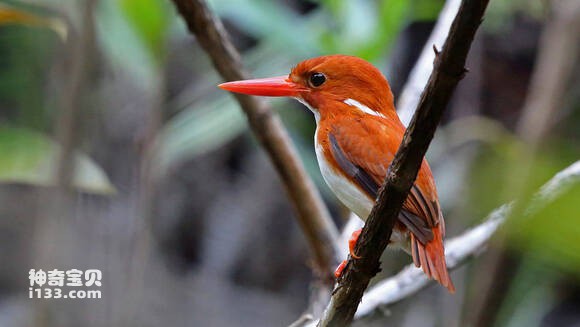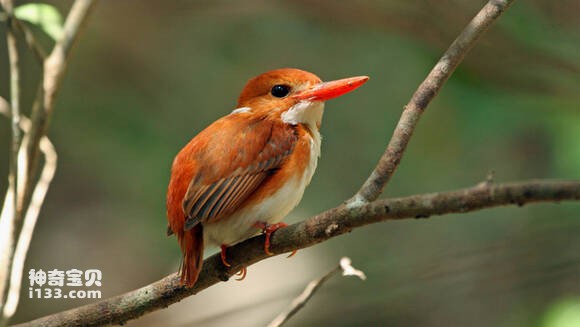Ispidina madagascariensis
IUCN
LCBasic Information
Scientific classification
- name:Ispidina madagascariensis
- Scientific Name:Ispidina madagascariensis,Ceyx madagascariensis,Madagascan pygmy kingfisher,Alcedo madagascariensis
- Outline:Climbing birds
- Family:
Vital signs
- length:About 12 cm
- Weight:17-22g
- lifetime:No textual research information is available
Feature
Distribution and Habitat
The small kingfisher is found in the Indian Ocean (including Madagascar and nearby islands).
The Manx kingfisher is similar to the pink cheeked kingfisher (Ispidina picta) that lives on the African continent, on the edges of grasslands and woodlands, in the rainforests and deciduous forests of Madagascar. Its distribution is very uneven and it is rare in western Madagascar. They are found at altitudes below 180 m.
Appearance
The kingfisher is 12cm long and weighs 17-21g for males and 17-22g for females. The top of the head is all bright red. The chin, throat, chest, abdomen, and tail of the lower body are white, with a rectangular white spot on each side of the neck. The lower back, the tail, the back of the cheeks, and the neck show a strong purple hue. Red mouth, dark brown iris. Legs red. Young birds have darker plumage than adults. The purple tones are not very noticeable. The black mouth is white.
Details
The scientific name of the small kingfisher is Ispidina madagascariensis, Ceyx madagascariensis, foreign names Madagascan pygmy kingfisher, Alcedo madagascariensis, There are two subspecies (1.Ispidina madagascariensis madagascariensis) in southwestern Madagascar. 2.Ispidina madagascariensis dilutus is found in Sakaha, southwest Madagascar.) .

The little kingfisher sleeps alone in a tree. The small kingfisher mainly eats insects, frogs and small reptiles. A sharp, rapid scream is often uttered in defense of territory.

Like most other kingfishers, the kingfisher nests on earth cliffs or river embankments, using its beak to dig tunnell-type burrows, 30 to 35 cm in diameter. Females lay eggs in November. These caves are generally bare of bedding. The eggs are laid directly on the nest ground.
Listed in the International Union for Conservation of Nature (IUCN) ver 3.1:2008 Red List of Birds.
Protect wild animals and eliminate wild meat.
Maintaining ecological balance is everyone's responsibility!








